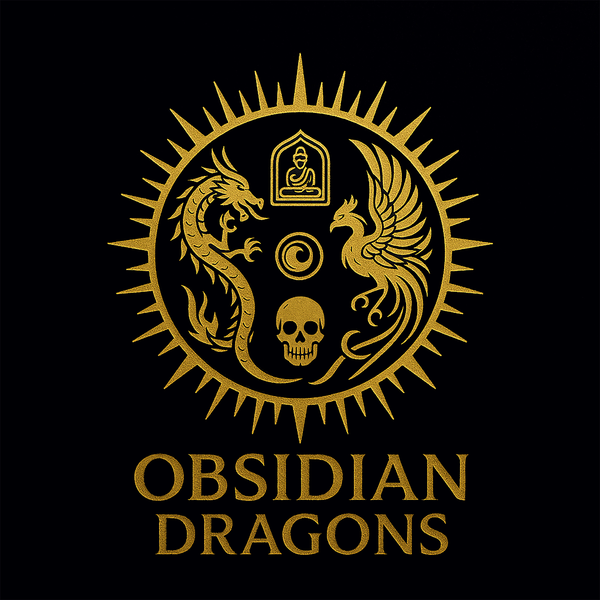
AMITABHA BUDDHA, Western Pure Land Buddha, Sukhavati
Share
Amitābha, Amitāyus or Amida, in Japanese 阿弥陀, is a Buddha of Mahayana and Vajrayana Buddhism. He reigns over the “Western Pure Land of Bliss” (Sanskrit: Sukhāvatī, Chinese: Xīfāng jílè shìjiè, ja.: saihō goraku sekai 西方極樂世界), a wonderful, pure, perfect world, free from evil and suffering. This pure land, a place of refuge outside the cycle of transmigrations — equivalent to nirvāņa according to certain conceptions — is at the center of the beliefs and practices of the schools of the Pure Land. This Buddha, which is also called the Buddha of Buddhas, is very popular among Mahāyānists, particularly in the Chinese world, Korea, Japan, Tibet, Laos, Cambodia and Vietnam.

In statuary, Amitābha is represented as Shakyamuni Buddha, but with the gestures (mudrā) of meditation or the transmission of the law.
This Buddha, due to the popularity of his worship, is known by many names.
In Sanskrit, it has two Sanskrit names: Amitābha (Sanskrit: अमिताभ), literally "Infinite-Light" and Amitāyus (Sanskrit: अमितायुस्) "Infinite-Life" (from amita: infinite, unmeasured, indeterminate; and āyus: life , long life).
In China, Japan, Korea and Vietnam, it is known by the Chinese names derived from the sutras which relate to it. Amida's name is a Sino-Japanese abbreviation of her two Sanskrit names. The first part of each of his two Sanskrit names is transcribed phonetically, with the addition of the character meaning Buddha — either "the Buddha Amit" or also Amida.

Amitābha, as well as the notion of his Buddha-land and his sutras — Great Sutra of Infinite Life, ch. and the Amida Sūtra were brought to China between 150 and 200 by the Parthian monk An Shigao and others such as Zhu Shuofo (竺朔佛). The Kushan monk Lokakshema translated them into Chinese. Amitābha is unknown in ancient Buddhism, and his cult can be thought to have developed in the early days of the common era.
Instructions on the practice of Amitābha Buddha were introduced to Tibet in the 8th century by the Indian master Padmasambhava. This practice was rediscovered by Mingyur Dorje (1645-1667), one of the twenty-one main tertöns.
The Vajrayana makes it one of the components of the Buddha-nature, either in addition to the Akshobhya Buddha alone, or associated with four other wisdom Buddhas or Buddhas of five directions (ch. Wǔfāngfó 五方佛): Vairocana in the center, Akshobhya to the east, Ratnasambhava to the south and Amoghasiddhi to the north.
Among the Tibetan mantras associated with it, there is a long Om Ama Rani Dzi Ouèn Ti Yé Soha7 and a short Om ami dhewa hri.
"Om friend dewa hri"
mantra of amitabha buddha
Om: The sound of the eternal universe
Friend: Infinite and Limitless Light
Dewa: Enlightened deity of Buddha nature
Hrih: With self-respect and dignity
Also known as the Amitabha Mantra, “Om Ami Dewa Hrih” is recited in Amitabha Pure Land Buddhism, Buddha embodying pure discernment and Light. By chanting this mantra, one evokes the mind of Amitabha Buddha, which is an immaculate consciousness without illusion or attachment. Often what holds us back the most is our own minds. Deceptive thoughts and ideas about oneself and the environment have the capacity to cause immense suffering in one's life, and sometimes it can be difficult to lift this veil of misconceptions from one's perception. A mantra such as 'Om Ami Dewa Hrih' serves to guide the practitioner in the direction of releasing illusory thoughts. Recite this mantra to free yourself from polluting and erroneous thoughts and beliefs, and to allow the awareness and enlightenment of the essence of Amitabha Buddha to enter your mind.
Tsepamé (Tibetan: ཚེ་དཔག་མེད, Wylie: tshe dpag med) is considered the Sambhogakāya form of Amitabha. He is depicted with the color red and in the position of meditation, holding in his hands a vase containing amrita, the nectar of immortality that bestows longevity, and an ashoka (painkiller) tree grows from the vase.
Maņdala-Amitābha is below opposed to Ratnaketu, later replaced by Akshobhya
The Vajrayana incorporated it into the esoteric elaboration of the Five Wisdom Buddhas, (Dhyani Buddhas or Jinas), along with Vairocana, Akşobhya, Ratnasambhava, and Amoghasiddhi. This can be seen on the so-called "Diamond Land" mandalas depicting them opposite Akşobhya (sometimes Ratnaketu). It is associated with the West and its color is usually red, the color of the setting sun, compassion, loving-kindness and emotional power. It is the most accessible Buddha.

Another elaboration focuses on the couple Amitābha / Akshobhya, representing respectively compassion and impassiveness, two complementary elements. Akşobhya rules over the eastern paradise (Abhirati) of the Diamond Land.
Amitābha is often found in his adorned form, Amitāyus, or in union with his consort Pandara, as well as in the company of Avalokiteśvara. His effigy is very often found in the headdress of the latter, considered the head of the line.
He is also called Lokanātha (“lord of the world”) or Padmapaņi (“who has a lotus in his hand”).
The Panchen Lama, one of the principal masters, after the Dalai Lama, of the Gelugpa school of Tibetan Buddhism, is considered to be one of the emanations of Amitābha.
